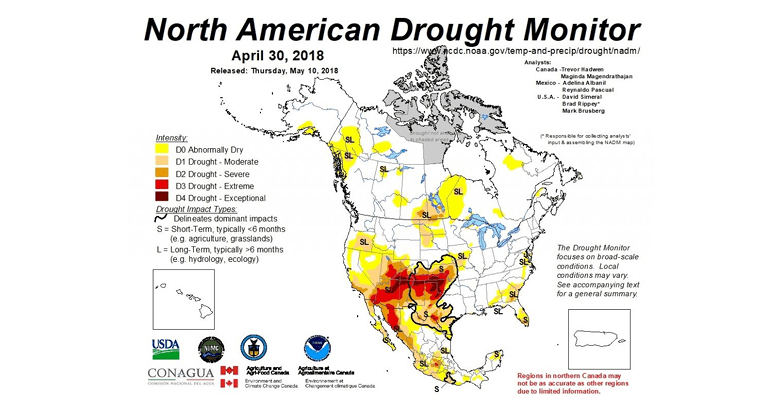By Robert Mace, Chief Water Policy Officer at The Meadows Center for Water and the Environment
SUMMARY:
-
Rainfall deficits continue to afflict most of the state.
-
La Niña is expected to fade into neutral conditions (La Nada) by the end of May; there’s a growing chance of El Niño conditions arriving by winter.
-
Drought conditions in west and south Texas are expected to persist and expand over the next three months, but wetter conditions are expected for the fall.
Most of the state remains bitterly dry, especially in West Texas, but recent rains have reduced 90-day rainfall deficits for much of the state. Nonetheless, sizable areas around Amarillo, Midland-Odessa and Big Bend have seen less than 25 percent of average rainfall over the past three months (Figure 1). The north-east, the El Paso-area, and smatterings in the central part of the state have enjoyed greater than normal rainfall over the same period.
![Figure 1. Rainfall as a percent of normal for the past 90 days (as of May 17, 2018). [source]](https://texaspluswater.wp.txstate.edu/files/2018/05/rainfall-may-1024x918.jpg)
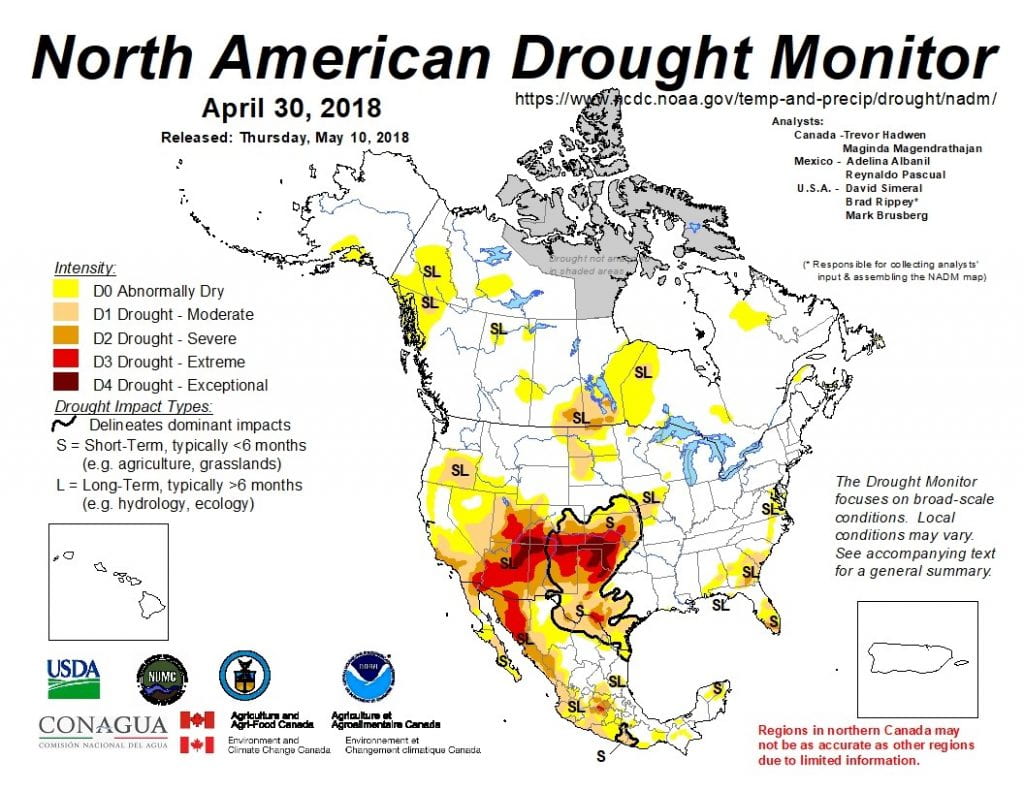
For the state, reservoir storage has moved to below normal for this time of year (below the median as measured since 1990) at about 84 percent full (Figure 3). This is the second time this year that statewide reservoir storage has been below normal, and we are about to head into out typically dry, summer months. As has been the case since the late-1990s, many West Texas reservoirs have been less than 50 percent full (Figure 4).
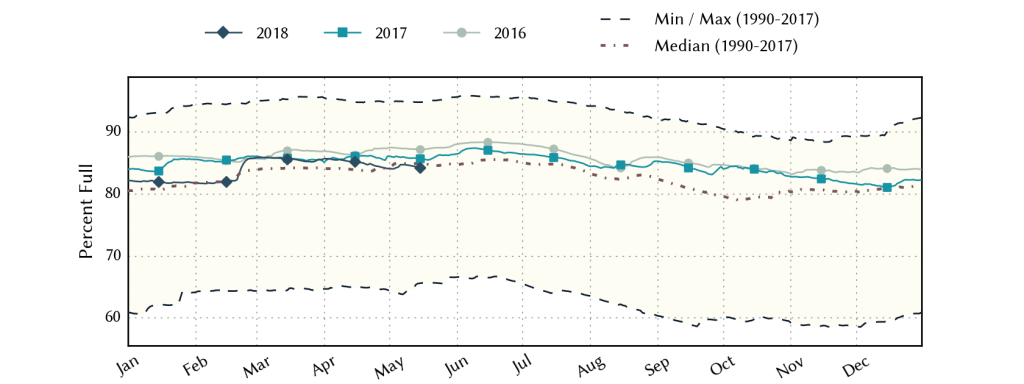
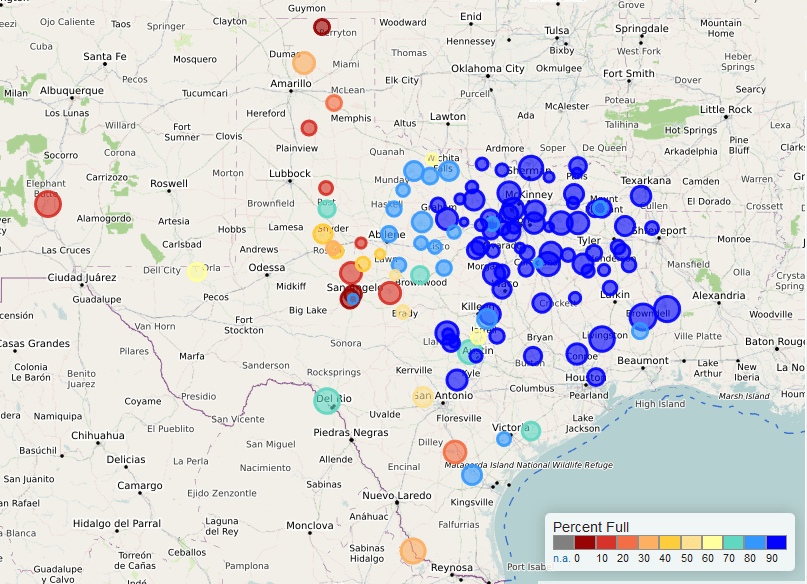
Looking forward, the Climate Prediction Center says that we will be coming out of La Niña conditions (which generally result in dryer-than-normal and warmer-than-normal conditions for Texas) by next month—good news for those weary of drought. Furthermore, the Center projects a 50 percent chance of El Niño conditions appearing this fall (which generally result in wetter-than-normal and cooler-than-normal conditions for Texas). A 50 percent chance sounds like a coin flip, but in this case, it’s a three-sided coin with La Niña conditions on one side, La Nada (neutral conditions) on the second side and El Niño conditions on the third side. Equal probability across the sides is therefore 33 percent, so 50 percent favors El Niño conditions (with a 40 percent chance of La Nada and a 10 percent chance of Niña). Winter outlooks for Texas show wetter-than-normal conditions but warmer-than-normal conditions (everything seems to be warmer than normal these days…). Stay tuned as we get closer to the end of the year.
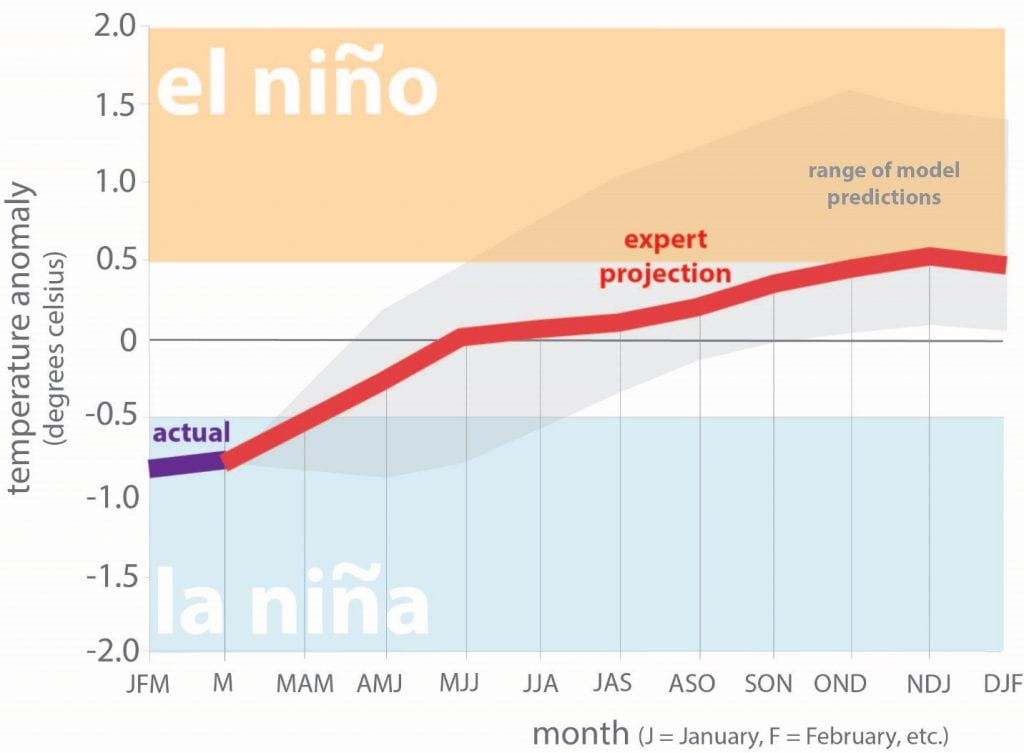
The U.S. Seasonal Outlook through the end of August projects drought remaining but becoming less severe in the Panhandle with drought remaining and developing in south Texas (Figure 5). The National Weather service projects warmer-than-normal temperatures and normal rainfall over the next three months for Texas (source).
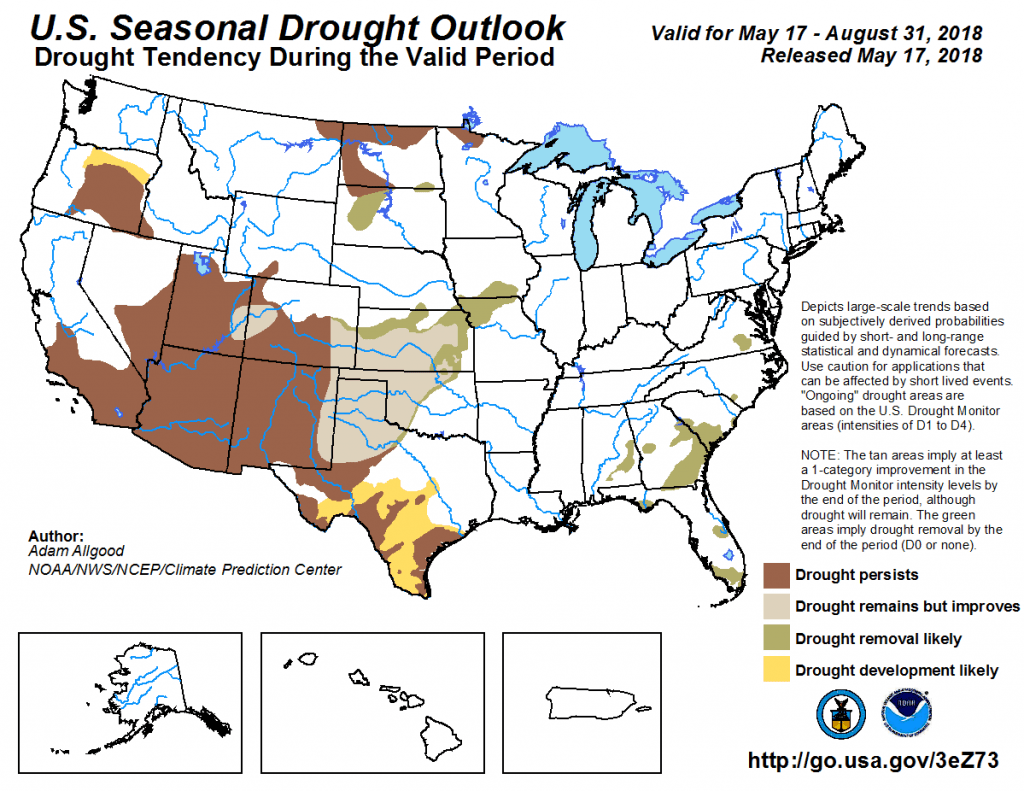
The National Weather Service has not yet published its hurricane outlook for 2018 (one is expected later this month); however, early predictions by others suggest a more active season this year (the lack of El Niño conditions supports this). Colorado State University (safely nestled away from tropical systems) projects 14 named storms, 7 hurricanes and 3 major hurricanes.

